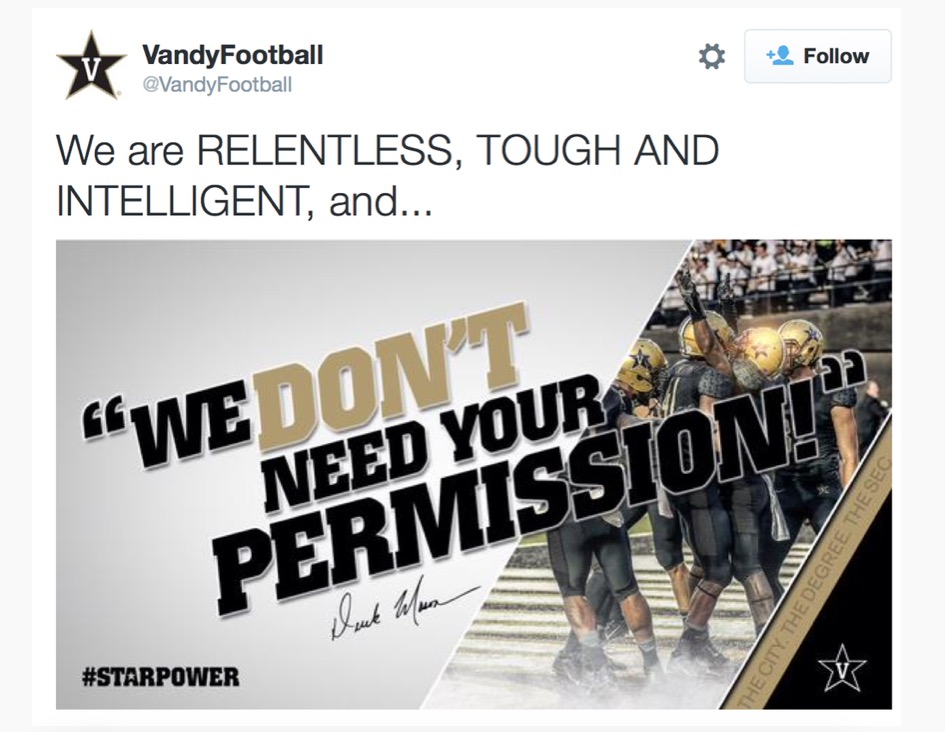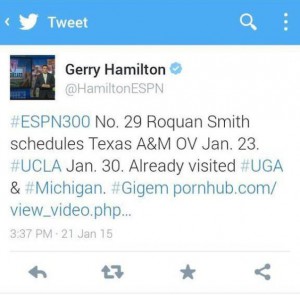Defining what it means to be a public relations practitioner became slightly more difficult in 2015.
As the lines between the communication disciplines blur and the distinction between public relations, marketing and advertising continues to make the slow transition to a more amalgamated profession, the clear conclusion among many in the field is that until that happens, the remaining walls that silo the professions must be pulled down.
This is not a new call to action, both Philip Tate and Deidre Breakenridge touched on the importance of a more integrated field two years ago in PRSA’s #PRin2014 industry prediction series (#PRin2016 starts tomorrow!). However, as we explored the top PR mistakes of 2015, a distinct trend began to emerge. Many of the biggest PR mistakes seen last year were largely a result of the right and left hands not knowing what the other was doing, so to speak. Understandably, folks are still hesitant to give up their fiefdom, but if we learned anything from the PR mistakes we saw last year, collaboration is king… long live the king!
Without further delay, and in no particular order, here are the worst PR/communication disasters of 2015:
 IBM Hacks up a Hairball:
IBM Hacks up a Hairball:
The tech industry is notorious of its lack of diversity, so when IBM launched a campaign focused on highlighting the field and encourage women to contribute to the profession, the powers that be likely thought there was no way it could go wrong. They were very wrong.
IBM’s chosen rallying cry, #HackAHairDryer, was viewed as sexist and short-sighted and almost immediately co-opted as a bashtag to point out the nature of the program.
.@IBM Oh good gosh hack a hairdryer that'll make tech more easy for women to understand!
Next time can we hack a delicious baked dinner?
— Host-Beast Kav P (@kav_p) December 7, 2015
Audiences wondered why IBM would suggest that women hack a beauty product instead of something more reflective of the broader technology space or even something more impactful?
The lack of foresight left many inquiring if any women were on the team the created the campaign or if any they were even consulted before the project was launched.
I wonder if any women gave feedback prior to the release of this campaign? #hackahairdryer https://t.co/S5Lc8QwLjt
— Chunte's musings (@chunteofmuse) December 9, 2015
IBM apologized for the mistake, and admitted that the campaign “missed the mark.” This debacle can be added to the growing list of mistakes that we’ve seen over the years that prove that all communication teams should be involved in the planning process before implementation, and also that diversity in the profession is even more relevant now, possibly than ever before.
Calling the Bud Light PR Team, you're needed for clean up in the stupid/thoughtless decisions aisle… pic.twitter.com/4FfwicUbdx
— Oliver Gray (@OliverJGray) April 28, 2015
Bud Light – “No Means No”:
Without getting into a discussion about the quality of one of America’s favorite light beers, early last year when Bud Light printed the line “The perfect beer for removing ‘No’ from your vocabulary for the night,” as part of their “Up for Whatever” campaign, I wondered if the team working on the campaign had one too many of their own product. Needless to say, a beer company insinuating that removing consent from a discussion would be okay, did not go over well with any audience. The inappropriate puns almost wrote themselves, as a quick glance at Twitter at the time confirmed. It is reasonable to wonder who saw and approved something so blatantly, impossibly problematic.
It’s worth noting that this was one out of 47 unique messages printed on bottles, but it’s still unimaginable that a beer company the size of Anheuser-Busch doesn’t have the checks and balances in place to catch an issue like this. Aside from sexual consent, saying “no” to someone who plans to drive after consuming a few too many beers is always a good idea. Even in a non-diverse workplace, common sense should have precluded this line from being printed…yet no one involved in the decision-making process seemed to catch the problem.
Incredibly, in addition to an official apology press release issued by the company, Lisa Weser, senior director of U.S. marketing communications for the beer company, took to Twitter to respond to Adweek’s PRNewser and may others who asked the questions about the company’s approval process. While sidestepping the placement of actual blame on one person or department, she did indicate that her department did not review the messaging before it was released to the public.
@jaypalter Certainly not, I think that is clear. I had not seen it — though you don't need to be a woman to see this was off, right?
— Lisa Weser (@LisaWeser) April 29, 2015
I highlight how unusual it is that Weser responded personally to so many people because, as you’ll see, this is an exception to the current norm.
Bloomingdale’s Spike Is A Miss”:
There’s really no easy, funny or even appropriate way to ease into this topic, so I’ll just let Gothamist state the situation for me: “Bloomingdale’s Ad Suggests Date Raping Your BFF This Holiday Season.”
This past holiday season, Bloomingdale’s published a cringe-inducing ad in their catalog which stated “Spike your best friend’s eggnog when they’re not looking.” Audiences immediately associated the ad with rape and issues with consent.
https://twitter.com/SpicerCorinne/status/665397634476154881
As you might have guessed, the questions of who in the ad department approved the piece and who was fired for letting the ad go to print were inevitable. Instead of actually answering those questions, Bloomingdale’s simply responded with the ubiquitous Facebook and Twitter apologies to which we’ve become numb.
We heard your feedback about our catalog copy, which was inappropriate and in poor taste. Bloomingdale's sincerely apologizes.
— Bloomingdale's (@Bloomingdales) November 10, 2015
 Vanderbilt Doesn’t Need Your Permission:
Vanderbilt Doesn’t Need Your Permission:
Continuing the trend of tone-deaf advertising that crosses the line of appropriateness and ignores common sense; last year the Vanderbilt University football team posted an image to Twitter that reflected the team’s baffling de facto motto for the season: “We don’t need your permission.”
It has been a while since I graduated college and even longer since I played football, but I have no idea what the slogan has to with that or any other sport.
I wasn’t the only one confused by this odd choice, especially considering that two Vanderbilt football players, Brandon Vandenburg and Cory Batey, had earlier in the year been tried for the aggravated rape and assault of an unconscious woman who they are also accused of filming. The connection was an easy one to make for those following the team.
Worst-timed football slogan since ever. pic.twitter.com/5cQLnMJtDH
— Jeff Ermann (@Jeff_Ermann) August 6, 2015
The post was removed shortly after the Twitterverse rallied to point out how foolish the tweet was. It was replaced by an apology:
We apologize for today’s tweet. It’s not a comment about sexual assault. Sex without permission is always wrong and not accepted. (1/2)
— Vanderbilt Football (@VandyFootball) August 6, 2015
Sexual assault is not acceptable at Vanderbilt University, Vanderbilt Athletics and Vanderbilt Football. (2/2)
— Vanderbilt Football (@VandyFootball) August 6, 2015
SeaWorld Continues to Sink:
Here’s an easy way to tell if someone is bad at PR: they suggest a Reddit-style AMA (Ask Me Anything) as a crisis response tactic for an embattled company or person. If you don’t know what an AMA is, you’re probably better off. AMA’s are tricky to navigate under the best of circumstances, but given that SeaWorld has come under fire for their treatment of animals, it’s strange that they would use this particular tactic as their primary communication strategy when it’s almost impossible to control.
Following the devastating Blackfish documentary that first aired in 2013, SeaWorld has had a hard time regaining its positive public perception and in-person park audience. We’ve reported on SeaWorld’s seemingly unending string of PR mistakes in the past as well as the inability of anyone to right the sinking aquarium’s ship; however, it would have been impossible to put together a PR disasters list without including them again this year.
As one headline asked when the campaign was launched in March of 2015; “Why Would Companies Ever Think a Campaign Like #AskSeaWorld Is a Good Idea?”
I’m still asking that question. The fact that SeaWorld seems to be spending money to maintain an Ask SeaWorld website connected to their Twitter profile and dedicated to answering select questions is inexplicable. The Twitter feed is flooded with a disproportionately high number of negative and snarky questions that go unanswered.
While the aquarium and theme park saw a slight uptick in Q3 earnings in 2015 (the latest available at time of print), it continues to suffer from low audience attendance and decreasing stock prices.
Spending funds on a technique that many PR industry insiders agree is a mistake seems to be a waste. SeaWorld might be better served by devoting the time and effort to a different strategy. While many of the other PR “disasters” on this list could possibly be a result of the PR team not being consulted before a message was issued, a statement made or an ad developed, it seems like SeaWorld has had its entire communication team at the table for the design, planning, and launch of this campaign.
 For the love of everything sacred, please double check your links!:
For the love of everything sacred, please double check your links!:
What would a PR disasters list be without someone posting a link to something they shouldn’t have? This year’s lesson in checking your link before you post it goes to Gerry Hamilton, the ESPN analyst who accidently posted a link to hardcore porn instead of the sports-related story he was apparently trying to.
Hamilton is also unique, because unlike many others on this list, he didn’t apologize. Instead, he simply deleted the tweet and ignored anyone who asked about it.
This interesting tactic seemed to have worked for the most part.
Those of us who manage or oversee the social media accounts for our clients and organizations likely sympathize with Hamilton. Although we’ve checked, double checked and triple checked a link, there’s no guarantee that we’ll always link to what we intended to. We can only hope beyond all hope that we don’t make the same mistake as Hamilton and the American Airlines social media manager the year before. An easy trick to avoid this sort of blunder is obviously not to watch or view porn at work.
The only good thing about PR disasters is that they are great learning opportunities for the rest of the industry. Hopefully you take something away from the above examples and avoid making any similar mistakes in 2016.
…
By the way, what ever happened to sexy, hipster Hamburgler?
McDonald's new Hamburglar only steals artisanal locally sourced hamburgers pic.twitter.com/Hx2pqbeDER
— Desus Nice (@desusnice) May 6, 2015
Use the comment section below to let us know which of 2015’s PR disaster you think was the worst or add one that you thought should have made the list.
Laurent Lawrence is the director of public relations for the Public Relations Society of America. Follow him on Twitter @LaurentLawrence.







Great article! It’s crazy to think that people trained in this field make such careless mistakes. These kinds of mistakes are what portray PR professionals as fixer-uppers. What advice do you have to avoid these mistakes?
[…] Lawrence, Laurent. (2016). Biggest PR Disasters of 2015. PRsay. Retrieved from https://prsay.prsa.org/2016/01/05/2015s-biggest-pr-disasters/ […]
[…] world very quickly. Success can go viral but more often than not it goes the other way. There are countless examples of when PR disasters exploded […]
[…] (You can read more here). […]
This was a great article and very accurate! One of the biggest PR disasters that I always think of is with SeaWorld. I can see why crisis communication could be difficult under the pressure of a PR crisis, but it is so important for companies to have skilled PR professionals that know how to handle these situations so they don’t get more out of control. Also, I think it is important when running a campaign to have it pitched to numerous people before running it, so they don’t run into a similar issue like what Bud Light went through.
[…] “The perfect beer for removing “no” from your vocabulary for the night” “The perfect beer for whatever happens” […]
[…] Weser, senior director of U.S. marketing communications, to take to twitter as well. According to PRSAY.com, Weser respond to Adweek’s, PRNewser and many others who asked questions about the company’s […]
[…] Biggest PR Disasters of 2015. (2016, January 05). Retrieved February 10, 2017, from http://prsay.prsa.org/2016/01/05/2015s-biggest-pr-disasters/ […]